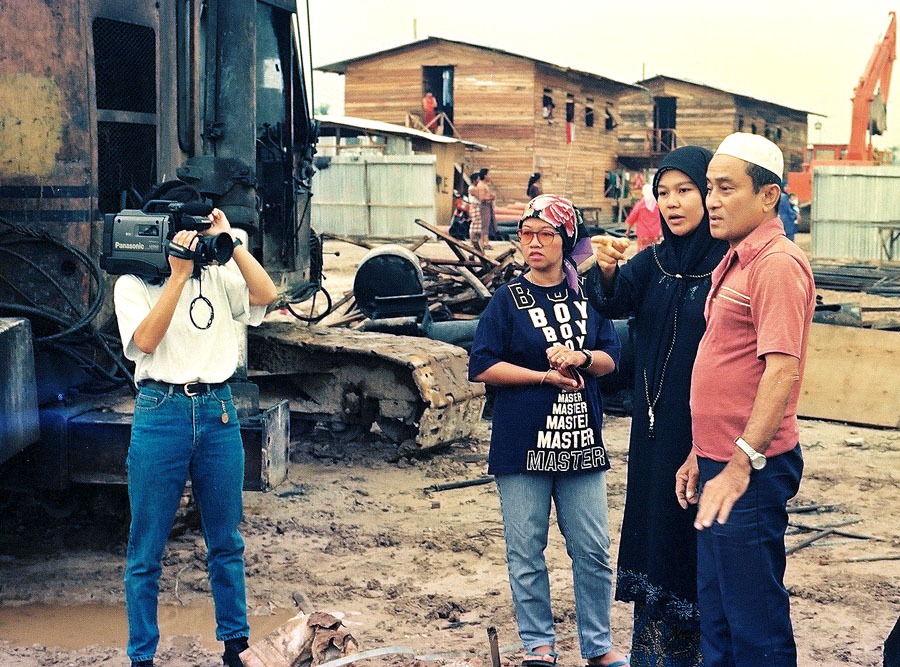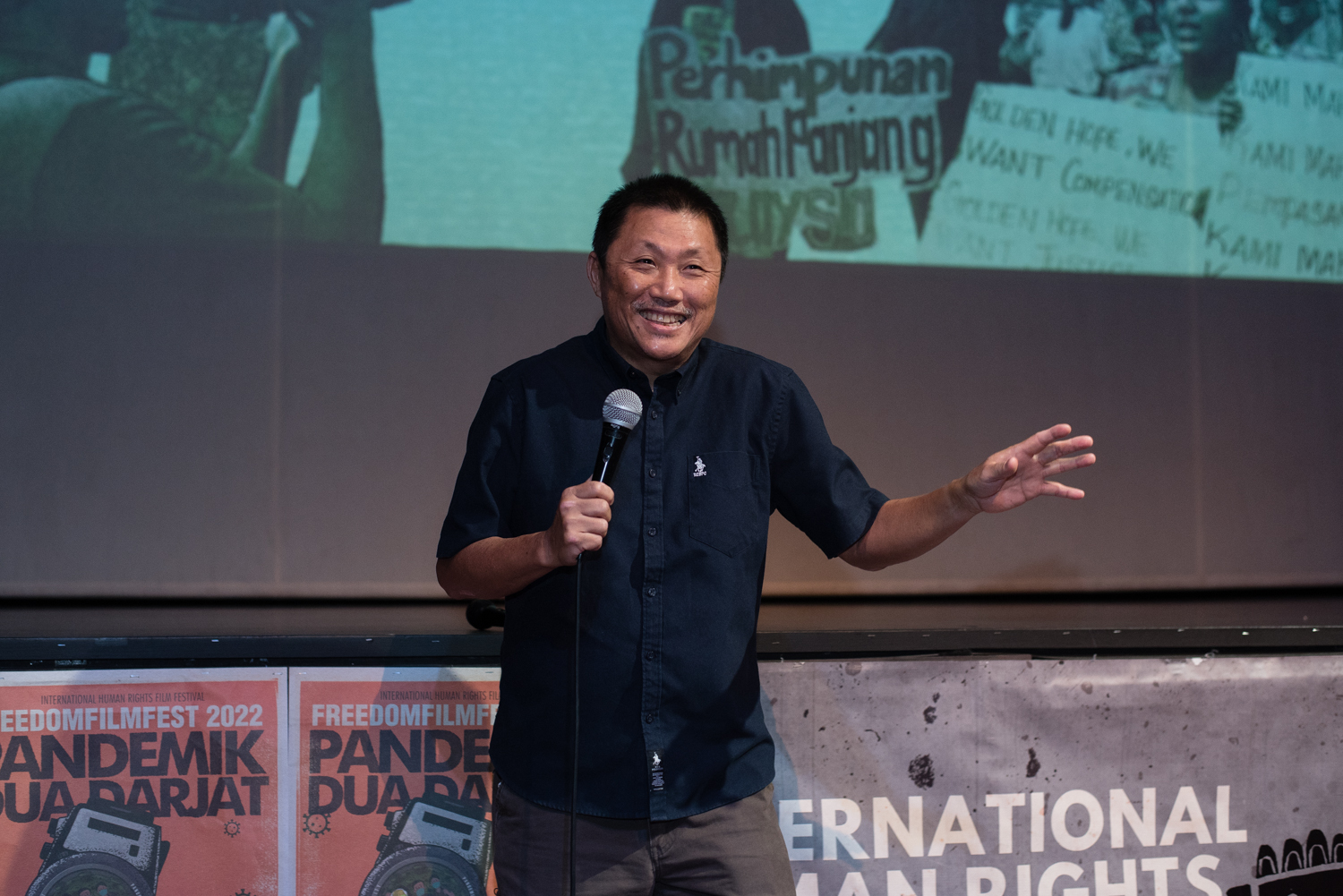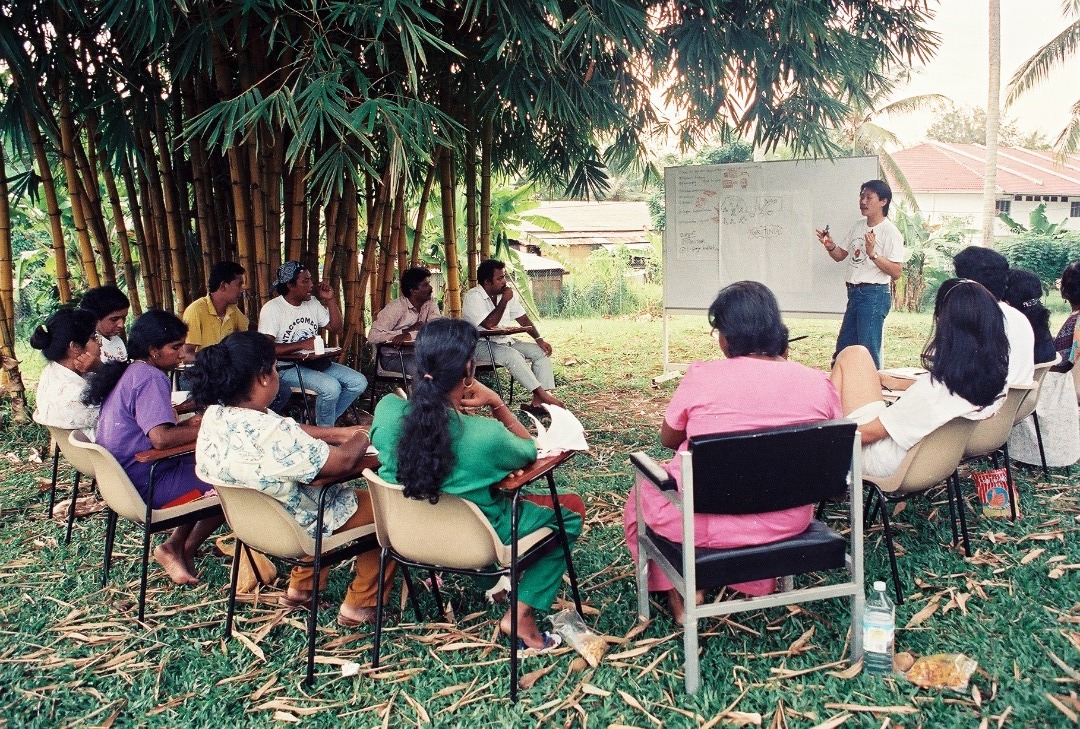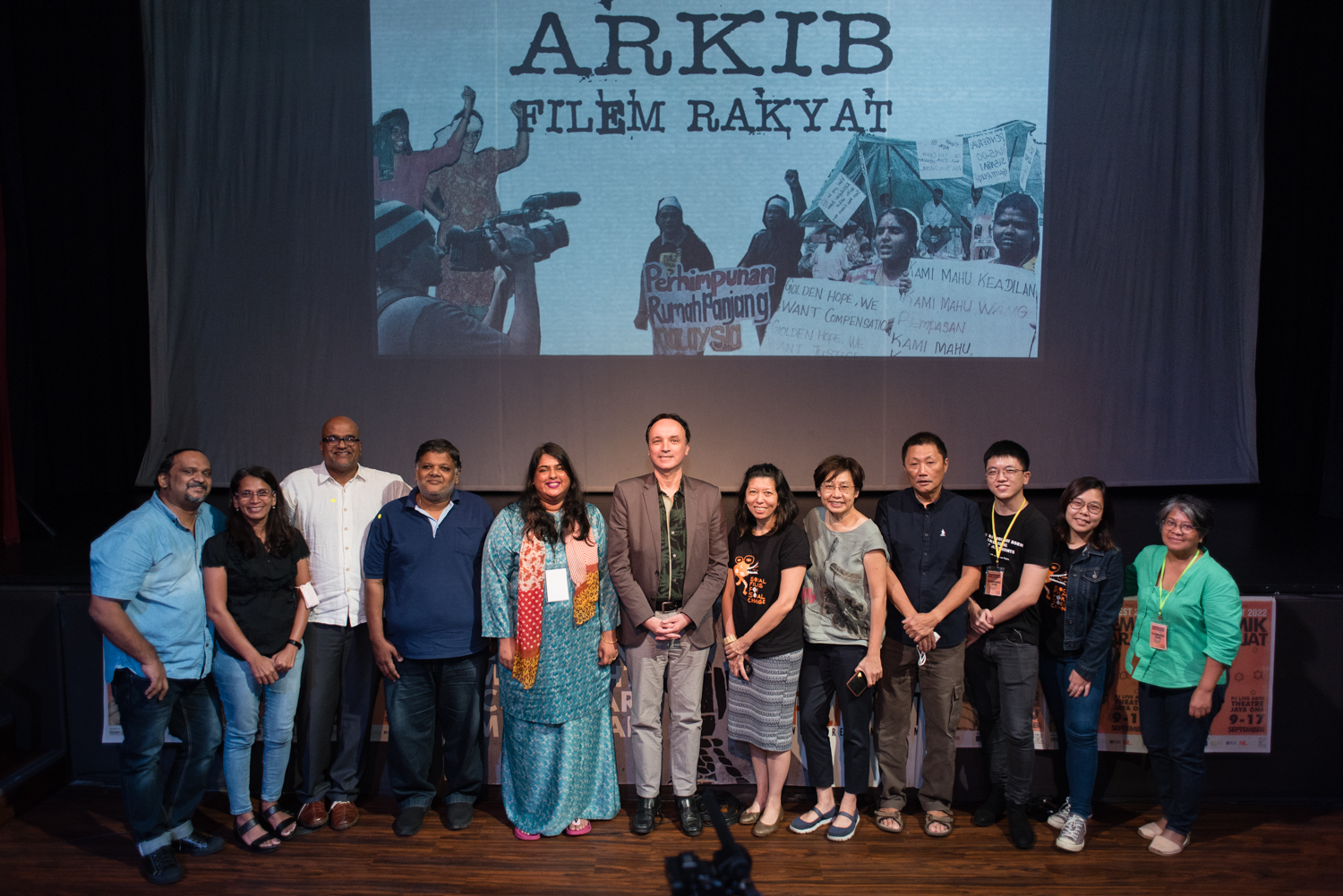The old man watched intently from his wheelchair, as images from decades of Malaysia’s social movements flashed across the screen of a theatre. Masses in the streets facing down the police. The outcry of politicians and activists. Trees collapsing, excavators clawing into slums.
The scenes are all moments in more than 2,100 hours of digitised footage contained in Arkib Filem Rakyat, Malaysia’s first archive dedicated to preserving the history of the nation’s social movements. The online website launched in September, sharing a trailer of the archive during the human rights-focused Freedom Film Festival in Kuala Lumpur that month.
The visual archive, one of few dedicated to social issues in Southeast Asia, emerged from three decades of grassroots documentary work by a scrappy crew of activists intent on sharing the legacy of ongoing struggles for human rights in Malaysian society.
“These materials, we don’t see in the media, we don’t see these stories documented in textbooks for students,” said Brenda Danker, a co-founder of Freedom Film Network and organiser of FreedomFilmFest who played a leading role in establishing the archive. “We don’t see historians having access to what happened 20 years ago.”
“We have a lot of this documentation of people who are either unable to articulate now or are no longer with us,” she added.

Malaysia’s parliamentary democracy was led by one right-wing ruling coalition for 61 years, only slipping from power in November after a tumultuous election. For decades, opposition groups and activists calling to reform a political system widely seen as rooted in patronage and corruption often faced brutal repression, as recounted in the archive’s testimony of Saari Sungib, the seemingly anonymous old man in the back of the theatre.
“We must expose their lies, their evil, their fraud,” a younger Sungib said in undated testimony of his detention by Malaysian security forces, featured in the archive.
Now crippled by Parkinson’s disease, Sungib was a former opposition parliamentarian with the People’s Justice Party, detained twice under the Internal Security Act (ISA), which allowed the government to incarcerate anyone for up to two years without trial and extend their imprisonment as needed. More than 10,000 people, including Malaysia’s newly elected Prime Minister Anwar Ibrahim, were detained under the ISA until its repeal in 2012. Many suffered torture.
“What was done in the interrogation room, we reveal it, we write about it, we publish it, we release it in alternative media so that people hear about it,” Sungib said.
Before the archive was created, most of the footage lay at risk of mould or warping in plastic cartons often exposed to humidity in the air and vulnerable to seizure by police, veteran Malaysian activist Tan Jo Hann recalled. But now stored in digital form, the decades of documentation and memories of the era can theoretically survive forever.

In 1993, Tan founded Pusat Komas, the organisation which contributed more than any other to shaping the archive’s content. Focused on organising urban poor, working class and indigenous communities through media, the organisation evolved into a chronicler of Malaysia’s most important social movements.
Tan, who spent seven years as a freelance photojournalist in the Philippines before returning to Malaysia, knew the value of images in capturing the abuses of authorities and the struggles of oppressed communities. He secured funding for some VHS cameras and a $20,000 editing studio.
“We really need that technical support to document our actions,” he said. “This is where the role of Pusat Komas became vital: no one was doing it on a systematic basis.”
The group distributed cameras to Orang Asli indigenous communities fending off deforestation, invited victims of torture such as Sungib to give testimony in the Pusat Komas office and coverred rallies and protests against the death penalty and government corruption. On top of this, they were aided by a sympathetic commercial video production company, moonlighting as documentarians of the country’s overlooked social justice struggles.

But for years, Pusat Komas had to keep a low profile and could not even register as an official nongovernmental organisation (NGO), registering instead as a company under Tan’s name, which exposed him to great liability. The only nonprofits that existed at the time were of the tamer, Rotary Club variety, he said.
“NGO was a bad word in Malaysia,” Tan recalled. “They would not dare to expose themselves as an NGO person. ‘Ah, you are communist, ah you are an anti-government, ah, you are a stooge of the U.S.’”
As Pusat Komas amassed footage in dozens of cassette tapes, the organisation had nowhere safe to store it. The videos piled up in plastic boxes scattered about different houses and the office and always at risk of being confiscated by authorities.
“We have a system,” Tan said. “All of the footage that is valuable to us at any moment’s notice we can move it, can vacate all of this and hide it somewhere.”
In 2003, Pusat Komas started the Freedom Film Festival, another underground initiative to highlight Southeast Asia’s activists and human rights work. The government applies rigid censorship laws and authorities have previously interrogated the festival’s director and raided the festival’s office.
The festival keeps lawyers on hand at every event. At the festival this year, government officials paid a visit to inquire about the contents of the film screenings but ultimately allowed the festival to persist.
“What’s in the media is very restrictive,” Danker said. “And government control is very high. So it’s very hard to get a narrative apart from the government narrative on the mainstream media.”
In 2017, Danker and Freedom Film Network Programme Manager, Huey Shin Choo, along with a team of volunteers and experts, began setting the archival process in motion, organising the painstaking digitisation of the reams of DVDs, mini DVs, CDs and other assorted cassettes and tapes, converting analog on an old desktop using decades old editing software.
Veteran activists like Tan, who had in many cases been present at the scenes featured in the footage, reviewed and categorised the videos to make it easier for future audiences of students, journalists, historians and other activists to search through the public catalogue.
“I think having this in a structured systematic archive would allow it to be more accessible, allow more people to have access to it to really understand or find out more about the history of Malaysia,” Choo said.

The archive, like the work of Pusat Komas and the Freedom Film Network is intended to catalyse broader movements across Southeast Asia to empower communities to document their own issues.
“Without archives of preservation, there is no evidence to prove your documentation of human rights violations,” said Arul Prakkash, Asia Pacific senior programme manager for the non-profit Witness, which trains activists in documenting human rights abuses. “I don’t know of any [other] preservation of human rights videos being done systematically [in Southeast Asia].”
He pointed to the election of Philippines’ president Ferdinand “Bongbong” Marcos, Jr. – the son of the former dictator who placed the country under martial law, killing and torturing thousands and allegedly pilfered billions from state coffers – as an example of the cost of failing to preserve the struggles and abuses of the past. In the recent Philippines’ election, the Marcos family employed a vigorous misinformation campaign to reinvent their legacy and portray themselves as victims of the mainstream press.
“The younger generations [in the Philippines] are not even aware of what happened during the martial law era, what had been done by Marcos and so on,” Prakkash said. “We need to use visuals and if visuals are not preserved from the era, how are you going to see, how are you going to understand?”
Katrina Maliamauv, Executive Director of Amnesty International Malaysia, echoed the importance of sharing historical context and a sense of continuity for future generations of activists in Malaysia and across Southeast Asia.
Her mother, a groundbreaking activist who illuminated migrant workers’ rights issues in the 1990s, was even arrested for her activism. She passed away in 2014 and is featured in the archive.
Maliamauv believes the goals her mother and other activists still live on. While not always achieved in their lifetimes, progress builds up incrementally, producing ripples of change over time. She said she could feel this when watching scenes from the archive, even knowing some of the communities protesting on camera would lose their forests, their homes and sometimes even their lives.
“I cannot feel a sense of defeat and hopelessness when I see these things,” she said. “Because, we people have tried, and something has come from it… it’s also a reminder that the struggles need to continue, and many people did not survive, many people did not get justice.”
Archives such as the Arkib Filem Rakyat extend context about the past and situate Malaysia’s advocacy before and beyond any individual lifetime.
“It is counter to what censorship tries to do, which silences and diminishes our imagination,” Maliamauv said. “I think the archive provides a source of energy and ideas, which really can challenge us to think beyond the limitations of now.”


